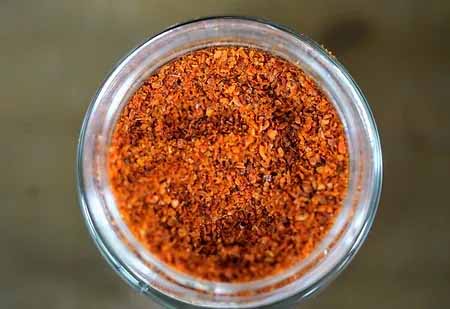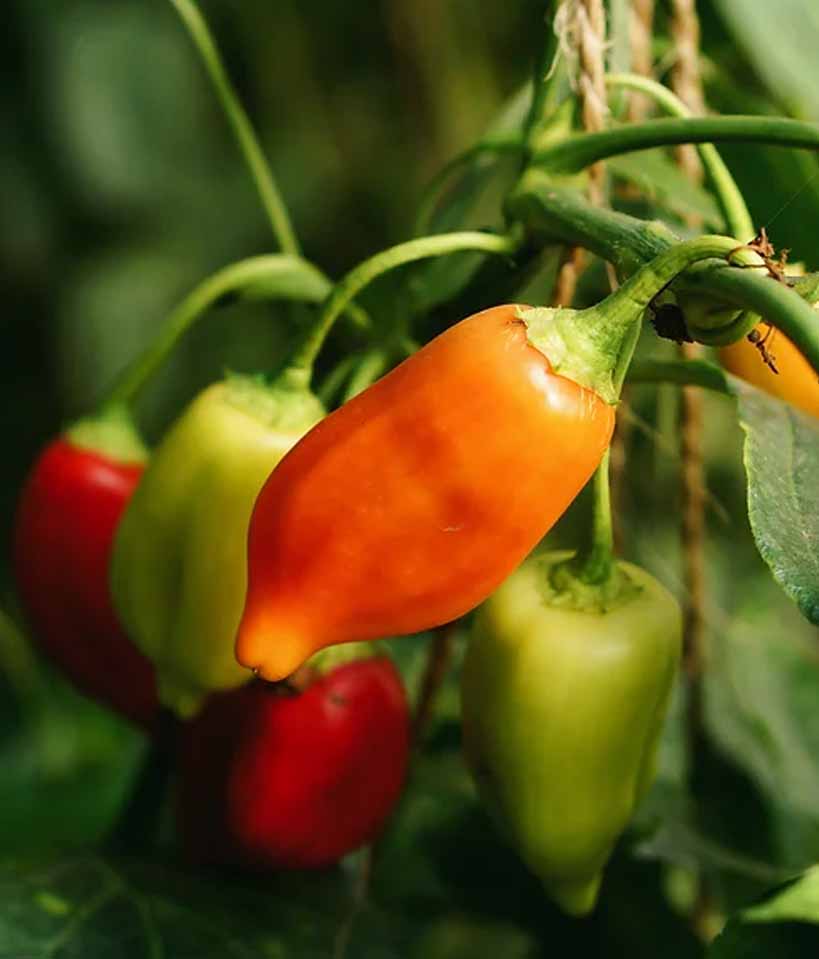Peppers originated in the Americas and first traveled to Europe when Christopher Columbus brought them back from his voyages. From there, peppers continued their journey around the world and into the cuisines of many peoples. As peppers journeyed around the world, they were cross pollinated and new unique varieties were bred to blend into the cuisines of the area. In Spain, Pimentos were bred. In Thailand, Thai Bird Chiles were bred. And in Syria, Aleppo peppers were bred.
It’s not just the breeding of the peppers that resulted in the uniqueness of Aleppo peppers, but it’s the way they are dried and processed. According to Marlene Matar, author of “The Aleppo Cookbook”,
“The preparation of Aleppo ground pepper is a long process. It is not washed, but cleaned with pieces of white cloth then cut lengthwise on one side only and the seeds are removed. Then the pepper is placed on the rooftop to dry in the sun. When partly dried, the naturally oily peppers are coarsely ground and mixed with a bit of salt and olive oil, then left to dry completely. This produces ruby-red, slightly salty flakes that keep well in the freezer thanks to the oil and are distinctively Syrian.”
Matar goes on to explain that this process is usually carried out by individual families on a small scale who then sell the ground pepper to larger companies which then sell and export the pepper.
By the time we receive Aleppo pepper, so much care and love has gone into it!

Aleppo peppers are traditionally used as a seasoning for grilled meats and kebabs. It’s also the star in the Middle Eastern red pepper dip, Muhammara. In the last decade, Western chefs fell in love with the spice, and have pushed past the traditional recipes using it for chocolates, pizzas, smoothie bowls, gazpacho, cocktails, and pastas–just to name a few interesting uses we’ve seen.
But just as we in the west started experimenting with Aleppo Pepper, war broke out in Syria and it became hard to come by. Hundreds of millions of dollars of crops, peppers among them, had to be abandoned and left behind as farmers fled for safety–in and outside of Syria. As the war and the devastation that comes with war has continued on for years, many feared that Aleppo peppers might actually become extinct. Seeds had made it across the border into Turkey (which is where we source our Aleppo Pepper from), but because of the ongoing conflicts in that part of the world, home gardeners in Canada, Europe, and the United States became determined to grow the peppers to increase the seed stock and supply those who could no longer get Aleppo from Syria. So from Toronto, Canada to Milan, Italy to Virginia, right here in the United States, the Aleppo Pepper is growing and producing seeds for when the farmers of Aleppo, Syria can return home.
And that our friends is just a bit of the story of Aleppo Pepper. It truly is a special pepper, and a spice we are proud to be able to offer it to you.
Sources and Inspiration for this article include:
- “The Aleppo Cookbook” by Marlene Matar
- “Food Matters” Scientific American Blog
- “The Long Journey of the Aleppo Pepper” New York Times
- Luay – @Urban Farm and Kitchen on Instagram



